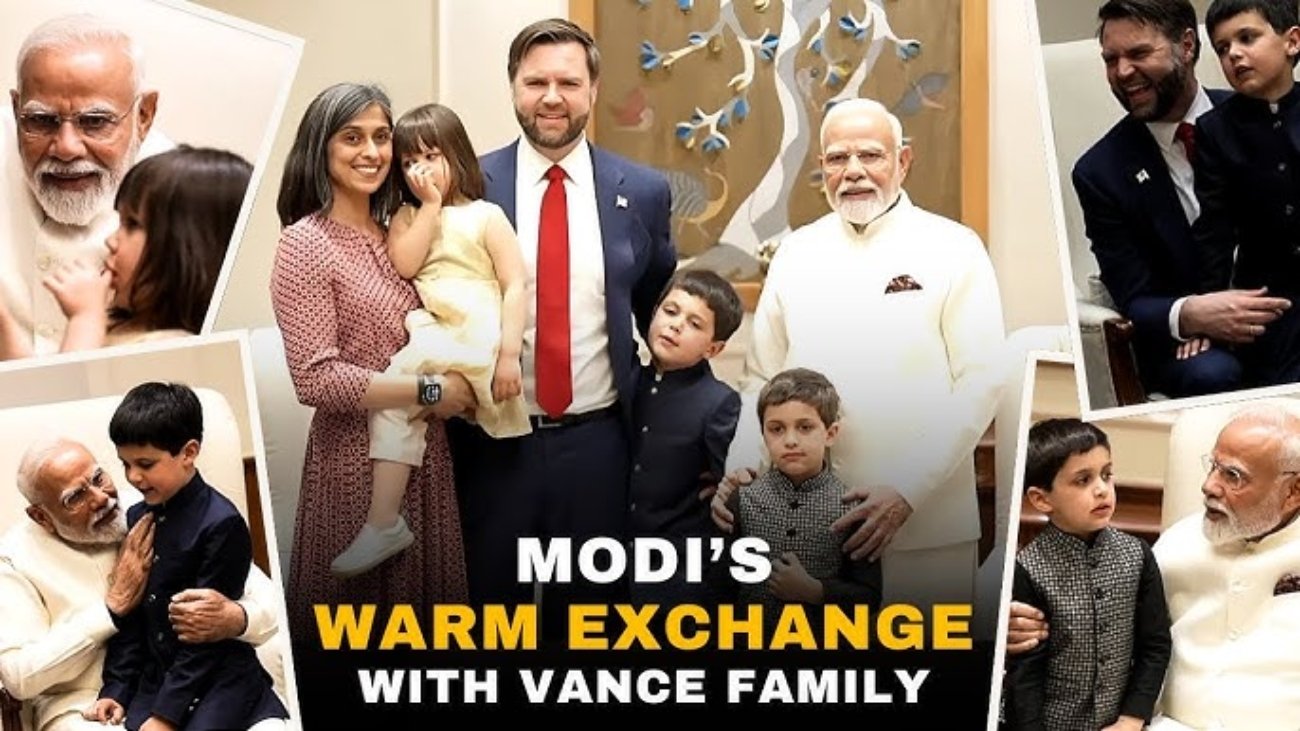Vice President JD Vance’s recent visit to India wasn’t just another diplomatic handshake across continents—it was a statement. A statement about priorities, partnerships, and perhaps most importantly, people. In a time when global alliances are being reimagined and the balance of power is in flux, this trip was symbolic of how two democracies—one the world’s oldest, the other its largest—are preparing to lean on each other more than ever before.
A Refreshing Shift from Formal Diplomacy
Vance’s India tour stood out in its tone. While official visits often get bogged down by protocol, his journey carried a sense of ease, openness, and personal warmth. Whether it was the candid camaraderie with Prime Minister Modi, the temple visits in Delhi, or walking barefoot with his family through the Taj Mahal, the optics weren’t just good—they were intentional. And in diplomacy, optics matter.
This wasn’t just about pushing defense deals or trade pacts. It was about building comfort and familiarity. For India, which has had a complex relationship with U.S. leaders in the past—from admiration to skepticism—Vance’s visit seemed to put people at ease. He wasn’t acting like a typical power broker; he was engaging like a guest with genuine curiosity and cultural respect.
The Power of Personal Ties
One can’t ignore the subtle but powerful influence of Usha Vance, the Vice President’s wife, who is of Indian origin. Her presence—along with their three children—brought a deeply personal element to the visit. It reminded both countries that diplomacy isn’t just about defense strategy or market access; it’s about the shared stories of families, immigrants, and global citizens who straddle both worlds.
That cultural familiarity—one foot in Ohio, the other in India—allows JD Vance to see India not just as a geopolitical partner, but as a part of his own family’s story. That’s not something you can manufacture in a press release. That’s soft power at its best.
Strategic Talks, Grounded in Realpolitik
But let’s not get lost in sentiment. The meat of the visit was undeniably strategic. India and the United States discussed advancing a comprehensive trade agreement—something that’s been on the back burner for far too long. Both economies have much to gain: India wants greater access to U.S. tech and clean energy investments, while the U.S. seeks expanded trade routes and a reliable ally in the Indo-Pacific.
On defense, Vance was candid. He pushed for deeper procurement ties, with a particular emphasis on India adopting more U.S.-made military equipment. While such requests aren’t new, the context is. With China flexing its military muscle and Russia embroiled in conflict, the U.S. is clearly repositioning India as a key counterweight in the region.
What was refreshing, however, was Vance’s approach. Rather than the usual transactional style of defense dialogue, the focus seemed to be on long-term interoperability and mutual trust. This marks a departure from earlier U.S. administrations that often saw India as a hesitant partner.
Terrorism and the Kashmir Tragedy
Unfortunately, the visit was also marred by a grim reminder of the regional tensions India lives with daily. The terrorist attack in Kashmir cast a shadow over the visit. But instead of sidestepping the issue, Vance addressed it directly, condemning the act and pledging U.S. solidarity in combating terrorism.
His comments were timely and tactful. Instead of politicizing the tragedy, he framed it within the shared values of democracy and security—reminding the world that India and the U.S. have a joint stake in fighting extremism.
Beyond Politics: The Human Connection
This visit wasn’t about headlines—it was about undercurrents. And the undercurrent is clear: The U.S.-India relationship is evolving into something more organic, more grounded, and less performative. JD Vance’s blend of Midwestern pragmatism and cultural sensitivity struck a note that felt contemporary and real.
Critics might say the visit lacked concrete takeaways. There were no flashy trade deals signed, no defense treaties announced. But that’s missing the point. Sometimes diplomacy is about groundwork—setting the tone, building the trust, and reminding each other why the relationship matters.
A Subtle Realignment
Vance’s visit subtly reinforces that the U.S. is shifting focus from traditional Western allies to newer strategic partnerships in Asia. And India, with its booming economy, rising global clout, and democratic credentials, is at the center of that realignment.
What the Vice President did through this visit was signal that India is not just a regional player—it is, increasingly, a global one. And the United States sees it as such.
Final Thoughts
In the often sterile world of geopolitics, JD Vance’s India visit felt like a breath of fresh air. It blended sincerity with strategy, personal heritage with national interest. Whether this trip will translate into policy breakthroughs remains to be seen. But what is certain is that it has set the stage for deeper cooperation and mutual respect.
As the world’s challenges grow more complex, the need for allies who understand, respect, and trust each other has never been greater. And if this visit is any indication, the U.S. and India are ready to walk that path—together.

Leave A Comment